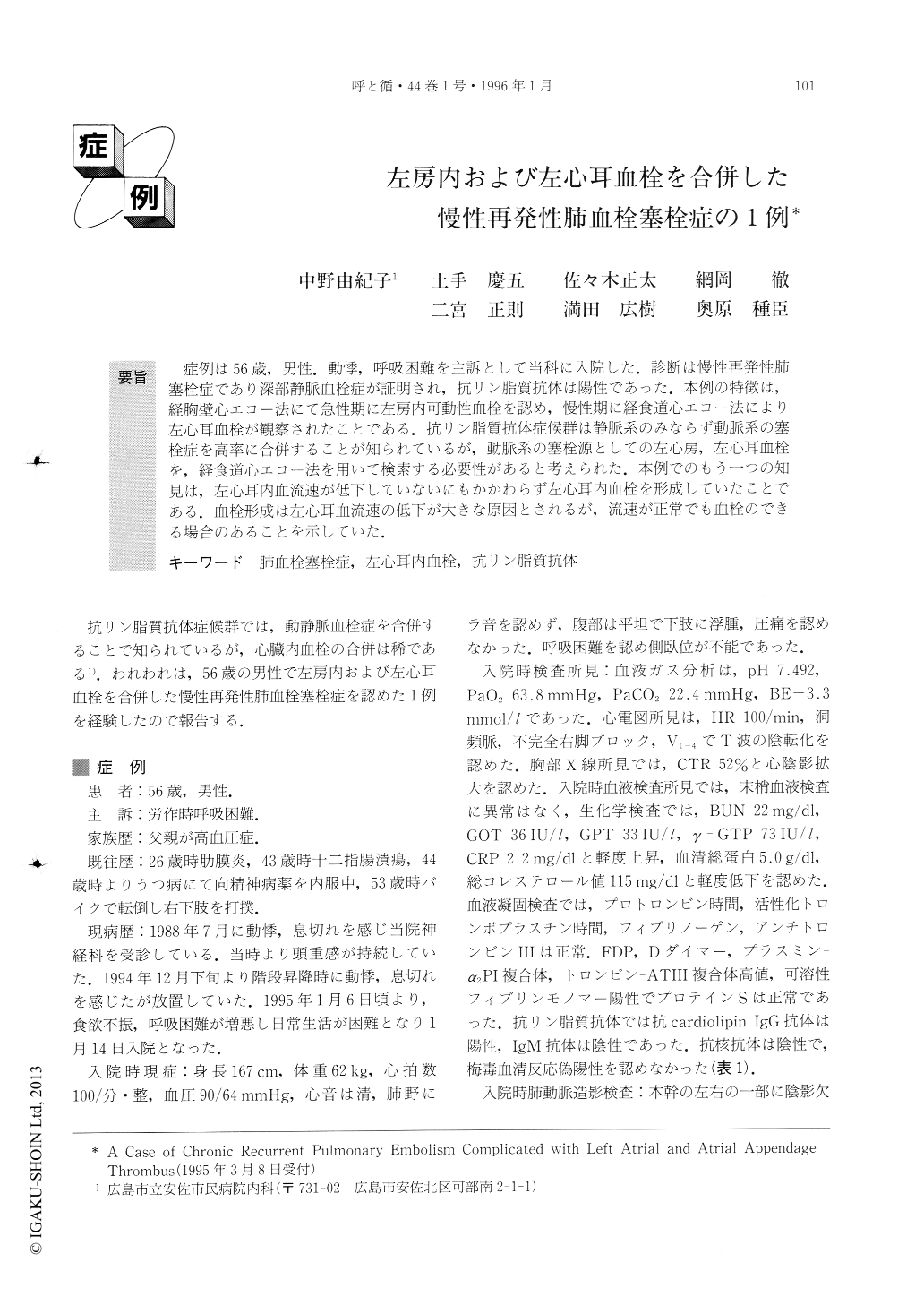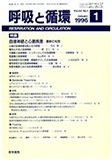Japanese
English
- 有料閲覧
- Abstract 文献概要
- 1ページ目 Look Inside
症例は56歳,男性.動悸,呼吸困難を主訴として当科に入院した.診断は慢性再発性肺塞栓症であり深部静脈血栓症が証明され,抗リン脂質抗体は陽性であった.本例の特徴は,経胸壁心エコー法にて急性期に左房内可動性血栓を認め,慢性期に経食道心エコー法により左心耳血栓が観察されたことである.抗リン脂質抗体症候群は静脈系のみならず動脈系の塞栓症を高率に合併することが知られているが,動脈系の塞栓源としての左心房,左心耳血栓を,経食道心エコー法を用いて検索する必要性があると考えられた.本例でのもう一つの知見は,左心耳内血流速が低下していないにもかかわらず左心耳内血栓を形成していたことである.血栓形成は左心耳血流速の低下が大きな原因とされるが,流速が正常でも血栓のできる場合のあることを示していた.
A 56-year-old man was admitted to our hospital because of dyspnea and palpitation. We diagnosed this case as chronic recurrent pulmonary embolism with deep vein thrombosis. Anti-cardiolipin IgG antibody was positive in this case. Transthoracic echocardio-gram showed a mobile left atrial thrombus during the aute phase. In the chronic phase, left atrial appendage (LAA) thrombus was detected with transesophageal echocardiography. It is widely recognized that anti-phospholipid antibody syndrome is associated with in-creased risk of not only venous thrombosis but also of arterial thrombosis. This case demonstrated that in such cases it is appropriate to investigate, with trans-esophageal echocardiography, intracardiac thrombus as a potential arterial embolic source. It is also intriguing that the current case developed LAA thrombus even though blood velocity of LAA was preserved. While low LAA velocity has been considered a major factor in thrombus formation, this observation indicated a possi-bility of thrombus formation with normal LAA veloc-ity.

Copyright © 1996, Igaku-Shoin Ltd. All rights reserved.


